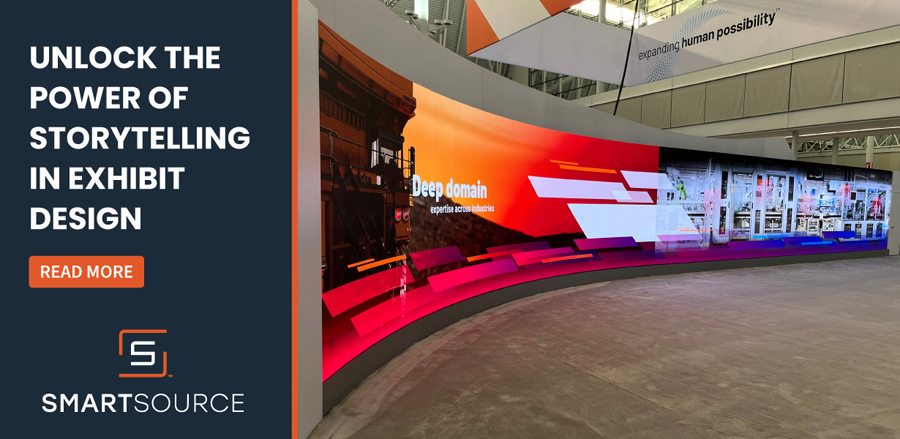| Exhibiting & Event Topics |
EXHIBITOR Magazine |
Find It Marketplace |
EXHIBITOR LIVE |
EXHIBITOR Education Week |
EXHIBITOR eTrak |
CTSM Certification |
EXHIBITOR Insight |
EXHIBITOR Awards |
News Network |
Advertise With Us |

Sponsoring Versus Hosting
Should we host our own hospitality event or sponsor something already organized by the show?
How can I improve my chances of getting an appreciable return from a small booth?
Asking for a Raise
How do I ask my boss for a well-deserved pay hike?
Five Tips for New Builds
Here are important - but often overlooked - items to consider when planning a new exhibit.
Ideas That Work
Hold the Phone, Auto Focus, Comfort Food, and more.
Taking a Seat
What the boss wants, the boss gets. It didn't matter that it was never a part of our original plan.
Washington State Convention Center
The Washington State Convention Center in Seattle stands in the heart of the Emerald City.
Presentation Stations
Six examples of theaters that not only drew a crowd but also made a positive, on-brand impression in the process.
Weight a Minute
Try to guess the weight of these booths that, despite being light on the scales, left a heavy impact on attendees.
Self Service
National Oilwell Varco Inc. built a booth designed to appeal to clients, prospects, and VIPs on a personal level.
By Land and by Sea
1904: An early form of augmented reality with a simulated voyage to Paris debuts at the Louisiana Purchase Exposition.
Gatorade Drinks Outside the Box
The Gatorade Company appeals to athletic influencers via a mix of gamification and education.
Myth Buster
EXHIBITOR debunks six common misconceptions held by exhibit-marketing newbies.
A Quick Guide to General Data Protection Regulation
We sifted through the 88 pages of GDPR regulations to find the parts that pertain most to exhibitors.
Belly Up!
Here are six examples of in-exhibit hospitality bars that offer form, function, and style straight up.
Game Changer
Author Jim Gilmore predicts what the future holds for experiential marketing.
International Exhibiting Guide: Paris
The least you need to know about exhibiting in Paris
The least you need to know about exhibiting in Abu Dhabi
The least you need to know about exhibiting in Buenos Aires
To be notified of new content from Exhibitor Magazine, please enter your e-mail address:

exhibiting 101
 Five Tips for New Builds
Here are important – but often overlooked – items to consider when planning a new exhibit. By Betsy Earle
Placing an order for a new exhibit can be as daunting as it is exciting. It's a process most exhibit managers long for, but it also causes many of us to feel overwhelmed by the sheer number of variables and choices. For instance, the 15-foot-tall branded tower pitched by your designer is a stunner, and technically you have room for it in your budget, but do you really need it? How much would it cost to ship and store? Would that money be better spent elsewhere, perhaps on an interactive demo station or an augmented-reality activation?
To help steer you through this winding maze of "What ifs?" and "Why nots?," here are some rules of thumb and big-picture principles I keep in mind whenever I'm planning a new build. Whether your dream stand is a pint-size powerhouse or an immense island, use this advice to ensure you start off on the right foot. 1. Share your actual budget with whoever is bidding on the job. Someone told me this when I was a trade show manager, and I thought, "Well, why would I tell my exhibit house reps my budget? They'll just design something that blows all my cash." That may be the reality with some firms, but the other side of this argument is that a reputable exhibit house won't want to present something that's either out of your price range or below your expectations. I compare this to buying a home. I might love the houses my realtor takes me to that are out of my price range, but my feelings don't negate the fact I can't afford these properties. The same goes if I'm looking for a middle-of-the-road ranch-style home but my agent keeps taking me to condos and fixer uppers. All that's being accomplished is both of us are feeling frustrated and wasting our time. If you don't feel comfortable picking a hard figure, provide your exhibit house with a budget range. But make it clear if that range is for just the property itself or if it also includes storage, shipping, and other ancillary costs. 2. Remember that your exhibit designer and builder can be separate entities. Oftentimes, exhibit managers present a request for proposal (RFP) to a number of exhibit houses to bid on the design and fabrication. While this can generate some extraordinary options, another angle is to work with an independent designer or issue separate RFPs for design and fabrication. Once you've settled on the design, you can reach out to a couple of exhibit houses to bid on the actual build, booth storage and management, and other pieces to the puzzle. I recommend this approach because you might like the design from one exhibit house but have more confidence in the account-management team at another firm. It's vital that you feel comfortable with the team handling the logistics of your trade show program, and not all exhibit houses are strong in both design and execution. By recognizing that you don't need to limit yourself to one company for the design and construction of your stand, you can get the best of both worlds: a stellar concept and the best fabricator for the job. 3. Ignore bells and whistles and focus on your messaging and objectives. It's easy to get caught up in the excitement and allure of designing an exhibit, and even easier to become beguiled by the fanciest rendering dreamed up by your creative partners. However, keep in mind that the most important part of exhibiting is getting the attention of the right attendee base, making it absolutely clear what your company does, and emphasizing how it is unique from its competitors. In-booth glitz and techno wizardry don't matter one bit if they don't communicate what a business offers. Some designs presented to you may be "cooler" than others, and some might be more functional. As you start weighing the benefits of a head-turning element or two, be sure to remain strategic and consider the long-term ramifications. Let's say that you are shown a design that has four hanging signs over an island booth. The plans may look great, but remember that each overhead sign is going to come with rigging and assembly costs, and the more hanging points you have, the longer your install will take. From a functionality standpoint, you might want to select only two rigged signs but add some attention-grabbing height to a few floor-standing components. But regardless of how fancy you decide to get, keep in mind that your top priority is selecting a design that clearly and succinctly conveys your key messages. One trick for accomplishing this is asking a few people outside of your company for their opinions of your favorite designs. Pose questions such as, "What do you think this company does?," "What is your first impression of this company based on what you see here?," and "Would this exhibit design encourage you to stop and explore?" As marketers, it isn't easy to step outside of our own individual worlds, so it's important to think about an outsider's perspective. 4. Factor how often your branding and messaging change when selecting graphic sizes and print options. Keep in mind that just because you've decided on a new build doesn't mean that you are forever stuck with the same set of graphics. If you anticipate that you'll be exhibiting at shows that target different attendees, you might want to choose graphics composed of more panels. For example, let's say you select a 9-foot-long back wall built in 3-foot increments. Rather than opting for one large graphic, consider printing three individual graphics under the premise that you'll be swapping out one or two panels for each target market. Perhaps your main messaging can be displayed on the left two panels, while your third panel describes a different set of features and benefits unique to each show's audience. This can lead to significant cost savings, as you won't need to purchase multiple 9-foot-long graphics for different markets. 5. Consider your audiovisual wishes – and why you are wishing for them. AV elements, e.g., flatscreen monitors, touchscreen kiosks, LED panels, etc., can be a great addition to your booth, so take them into consideration early in the design process. A monitor stand plopped in an exhibit looks like an afterthought, especially when there are plenty of ways a screen can be mounted directly onto various exhibitry and look like an integrated piece. When it comes to planning the placement of these elements, many exhibitors take an indiscriminate approach and simply put a screen where they think the exhibit "needs a little something." I, on the other hand, suggest a more deliberate method: 1) determine which products or services you want to highlight, 2) establish the best way to present that information, e.g., looping video, slideshow, touchscreen engagement, etc., and 3) calculate how many AV elements are needed to execute that plan. When designing a booth, I always ask my clients why they want a monitor or kiosk in a certain area – and then I ask them several more times because these add-ons can quickly elevate the price of a design. Your first new build can be intimidating, but it often demonstrates your company's faith in your program. So be proud of the opportunity to be involved in these decisions. Do your best to look at the big picture, but break the process down into small pieces so that you don't have unexpected surprises. With careful consideration, you'll hopefully invest in a booth that drives your company's sales while managing its costs. E  Betsy Earle, CTSM
Betsy Earle, CTSMmanaging director and founder of Event Driven Solutions LLC. Earle obtained her MBA at the University of Miami and earned her Diamond-level CTSM designation in 2018. Exhibiting101@exhibitormagazine.com 
|
